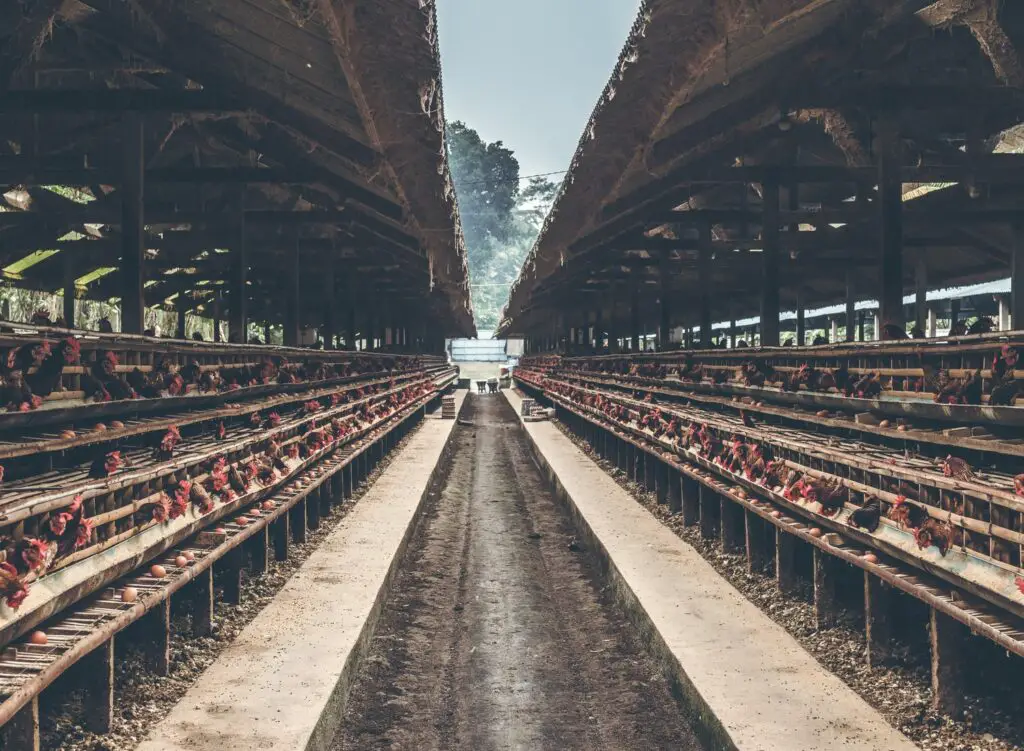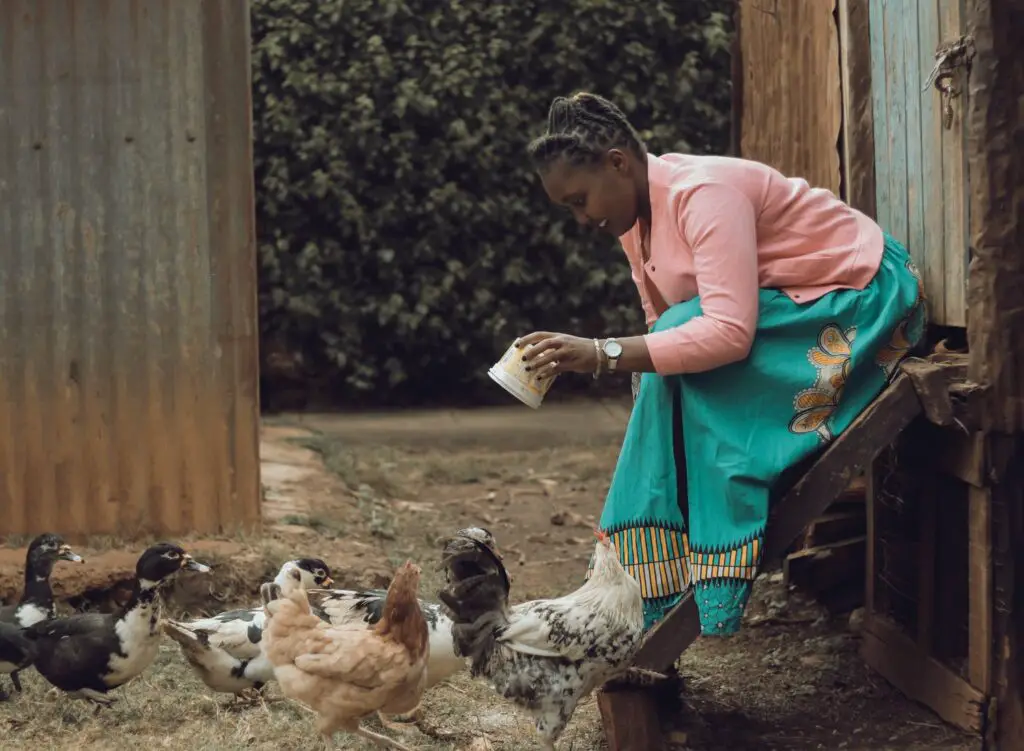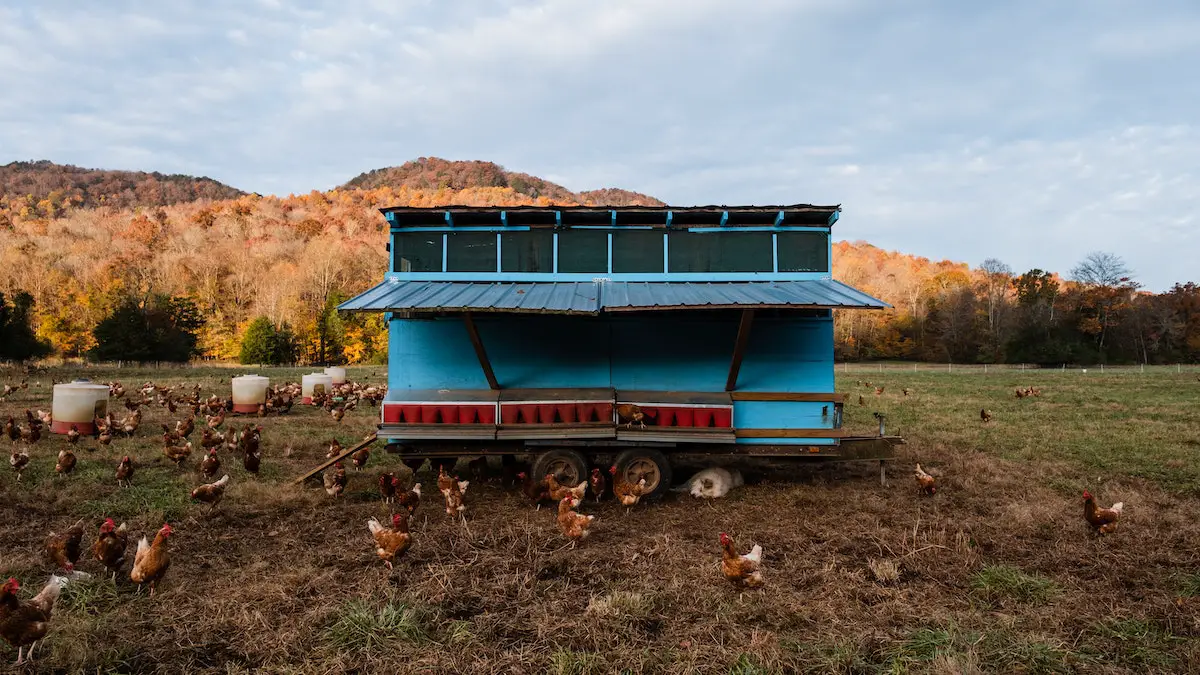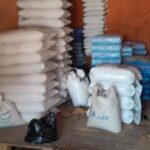Some links on this page may contain affiliate links which means that, if you choose to make a purchase using the link, Agricfy.com may earn a small commission at no extra cost to you. For more information, go to our Affiliate Disclosure Page!
Introduction
Poultry breeding is broadly accepted by people worldwide and offers a good supply of protein, particularly for disadvantaged rural populations, because of its low capital, labor, and land requirements.
The move toward deep litter and free-range housing systems for laying hens has accelerated in recent years. Laying hen management in deep litter and free-range systems needs more knowledge and effort than management in typical battery cages. Any farmer considering keeping hens in these production methods should make every effort to learn from well-managed and profitable enterprises.
The location of the birds depends on the amount of area you have available and the number of birds you wish to raise. The main advantage of keeping birds in cages is that it saves room. The success of the birds, whether in deep litters, free-range, or cages, is mainly determined by how effectively they are handled.
Cage Vs. Free-Range Vs. Deep Litter System of Poultry Farming
Cage System of Poultry Farming

The cage system for raising birds has been classified as a high-intensity system, with each bird having a floor space of 450-525 square centimeters (0.6-0.75 square feet). Birds are maintained in cages in groups of one, two, or three, in single, double, or triple rows.
Advantages
- The number of birds raised per unit of area is higher.
- Makes it easier to keep records up to date.
- Assists in detecting weak producers and eliminating them as soon as possible.
- Control of the vices of cannibalism in poultry and egg consumption
- It contributes to the development of clean eggs.
- Stress causes are eliminated
- Coccidiosis and worm infestation are easily controlled parasitic diseases.
- Prompt measures to reduce feed waste.
- The cage housing technique is appropriate for areas with regulated climatic conditions, such as where the daytime temperature in the summer is not too hot and the nighttime temperature is not too low.
- It has been claimed that caged layers produce more eggs than those housed in deep litter systems.
- In confined birds, feed efficiency and egg weight were higher than in laying flocks using a deep litter system.
Disadvantages
- Difficulties in providing enough ventilation for birds, particularly during the summer and in densely populated areas.
- Leg problems, cage layer weariness, fatty liver syndrome, insects, and unpleasant fumes will become more common in the home.
Free-Range System of Poultry Farming

Free-range chicken farming is a long-term chicken production strategy that allows hens to develop their natural ability. Chickens reared in a free-range system generate unquestionably higher value products (egg and meat) than those maintained in a battery cage or deep litter system.
If you’re thinking about how to start a free-range system of chicken farming, you can read this article that extensively discusses the ways and steps of starting a free-range system.
Advantages
- Effective Insect and pest control
- Reduced cost of production
- Higher value products
- Active and healthier chicken
Disadvantages
- Hens might be exposed to poisons, wild birds and their illnesses, predators, and climate extremes in the wild.
- Hens are generally hesitant to utilize the range area or go too far from the hen house, causing the pasture surrounding the house to deteriorate.
Deep Litter System of Poultry Farming

The deep litter system is a labor-intensive poultry management method that entails raising hens on a concrete floor with a layer of bedding materials such as wood shavings, groundnut husk, and rice bran.
The bedding material is known as “litter,” and it is from this that the term “deep litter system for hens” was coined.
Advantages
Raising hens in a deep litter system has several advantages for the farmer.
- Unlike with a battery cage system, when chicken dung falls to the ground, litter is essential for absorbing moisture in chicken poop.
- It also helps to accelerate drying by increasing the surface area of the house floor and protects chicks from the ground’s chilling effects.
- Assist the chicks in gaining balance while moving about the chicken coop.
- The litter material adapts to the chicks’ new weight as they grow and gain weight, which is critical for bone and muscle development.
- It improves poultry management efficiency.
- Using wood shavings as litter minimizes odor by reducing the ammonia in the air that is released by the chicken droppings.
- Allows for easier management of chickens.
- Makes the most of the available space
- Aids in the prevention of bone problems that are typical with battery cage systems.
- Increases the pace of production/growth
- The deep litter system also enables hens to scratch the floor in search of food or warmth, as is their natural behavior.
- It protects the chickens from the elements during the winter.
- Aids in the quick detection of unwell birds.
- Another benefit of the deep litter system is that the bedding material may be removed from the poultry farm and used as mulch or manure on the farm.
Disadvantages
- Although this chicken farming technique offers several benefits for the farmer, it also has some drawbacks.
- The following are some of the drawbacks of deep litter poultry farming:
- The deep litter system requires a huge amount of litter, which raises the manufacturing cost.
- Cannibalism and feather pecking are more common in this method than in the cage style of chicken husbandry.
- Illnesses and parasites readily spread in the deep litter system.
- Raising layer hens in a deep litter system results in soiled eggs.
- Determining the unproductive birds in the poultry house, as well as catching a bird on the farm, is challenging.
Factors to Consider When Choosing a Bird Rearing System
- Type of Chicken
The goal is to figure out “which method is ideal for layers or broilers, cage, free-range or deep litter?” Cages are used to grow commercially farmed layer flocks, particularly from the age of 16 weeks. This is primarily to make management of the vast flock easier.
Most small-scale farmers prefer to utilize a deep litter system for layers since cages are more expensive. However, due to the issue of dirty eggs, some of the upgrade and acquire cages along the way.
Deep litter is used to grow the majority of commercially farmed broilers. Although a great percentage of small-scale broiler producers prefer deep litter and free-range, the cage approach is fast gaining traction.
Especially if a netting floor is used. The two chicken breeds may be grown in either deep litter or battery cages, therefore the kind of bird isn’t a factor.
2. Initial Investment
When we examine the costs of keeping hens under both systems, things get more serious. Cages are more expensive, as a result, individuals who are just getting started frequently do away with cages at first making use of free-range and deep litter.
However, this may need more labor and more people to operate the farm. But that’s in the long run, and how many small-scale farmers are concerned about the long term? Only a few.
3. Management Methodologies
Most cages include nipple drinkers, which automatically provide water to the hens. In deep litter and free-range, it is not always the same, since many farmers still pour water into drinkers daily. Automatic drinkers on a deep litter can only be afforded by the wealthy.
In addition, compared to deep litter and free-range systems for layers or broilers, where the birds’ free movement allows them to spill water, spillage problems in cages are minimal.
For any seasoned farmer, this is a time-consuming procedure that must be closely monitored. Any moist places detected will need to be packed and replaced, which will add to the workload.
4. Workforce requirements
To prevent soiling, a deep litter system for layers necessitates more frequent egg plucking. A deep litter system also requires more staff per thousand birds than a cage system.
In a cage system, three persons can easily handle 10,000 hens; in a deep litter system, the same number of chickens would demand more effort.
5. Execution
There is no discernible difference in feed consumption in cages and deep litter systems but there is in free-range. Chicken in the free-range system tends to consume move food since they are more active than chickens in deep litter and cage systems.
While cage-reared broilers may seem cleaner than broilers are grown in deep litter, breast blisters are another issue to watch out for in the cage method. Broilers grown on deep litter may also be clean and free of breast blisters if litter management is done properly.
I believe that the performance of layers in a deep litter system cannot be as good as in a cage. Cage-reared layers produce more and have fewer incidences of paralysis when stocking density is optimal.
When hens are reared on deep litter, however, concerns such as egg eating and broody chickens might decrease egg production.
6. Manure
Manure may quickly accumulate in a deep litter system for layers or broilers, necessitating regular cleanup if not properly handled. In comparison to the cage and free-range method, this typically requires a significant amount of effort.
In the cage method, waste is cleaned using water, which makes it much simpler. When deciding between the two systems, you may wish to consider this factor.
7. Disease Prevention and Control
If you want to generate money, this is another vital factor to consider. You must understand the mechanism that enables you to better manage ailments. Diseases spread more quickly in deep litter systems than in cage systems.
Since caged birds have restricted movement, the chicks are not exposed to their waste. A sick bird may roam from one end of the deep litter system to the other, mixing up with other birds in the free range and transferring illnesses to them.
When dealing with disease, bear in mind that an infected bird in a deep litter or free-range system is easier to notice than one in a cage. In a deep litter or free-range environment, unwell birds are easier to see.
Conclusion
Numerous studies have been conducted to investigate the influence of battery cage management vs deep litter management versus free-range management on egg production, egg quality, meat quality, and feed conversion.
These metrics were shown to be enhanced in the chicken cage growth approach when compared to floor rearing. Economic studies, on the other hand, are critical for determining the profitability and relevance of each method of raising in various climates.
If you are wondering about how to start a poultry farm, you can check the article I wrote HERE. It will serve as a guide to successfully running your business.
THIS IS TO YOUR SUCCESS








Thanks for any other informative site. The place else may I am getting that kind of info written in such a perfect manner? I’ve a project that I am just now running on, and I’ve been at the look out for such information.
This is really interesting, You are a very skilled blogger. I’ve joined your rss feed and look forward to seeking more of your magnificent post. Also, I have shared your site in my social networks!
Hey, you used to write magnificent, but the last several posts have been kinda boring… I miss your super writings. Past few posts are just a bit out of track! come on!
Thanks for your feedback. If you don’t mind, what are the things that changed and what we could improve.
It’s very easy to find out any topic on net as compared
to textbooks, as I found this piece of writing at this website.
This design is steller! You certainly know how to keep a reader amused. Between your wit and your videos, I was almost moved to start my own blog (well, almost…HaHa!) Excellent job. I really loved what you had to say, and more than that, how you presented it. Too cool!
Good site! I really love how it is easy on my eyes and the data are well written. I am wondering how I could be notified whenever a new post has been made. I’ve subscribed to your RSS which must do the trick! Have a great day!
I have not checked in here for some time because I thought it was getting boring, but the last several posts are good quality so I guess I will add you back to my everyday bloglist. You deserve it my friend 🙂
Normally I don’t read post on blogs, but I wish to say that this write-up very forced me to try and do so! Your writing style has been amazed me. Thanks, very nice post.
Thank you for the auspicious writeup. It in fact was a amusement account it. Look advanced to more added agreeable from you! However, how can we communicate?
I have read a few good stuff here. Definitely worth bookmarking for revisiting. I wonder how much attempt you put to make this sort of wonderful informative web site.
I am now not sure where you’re getting your information, but good topic. I needs to spend a while finding out much more or figuring out more. Thank you for great info I was on the lookout for this info for my mission.